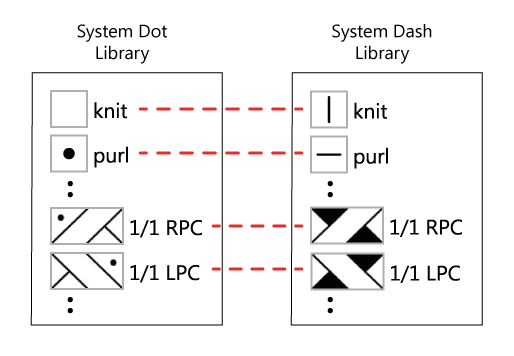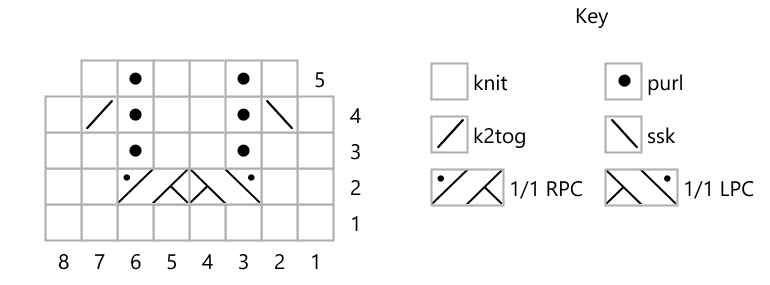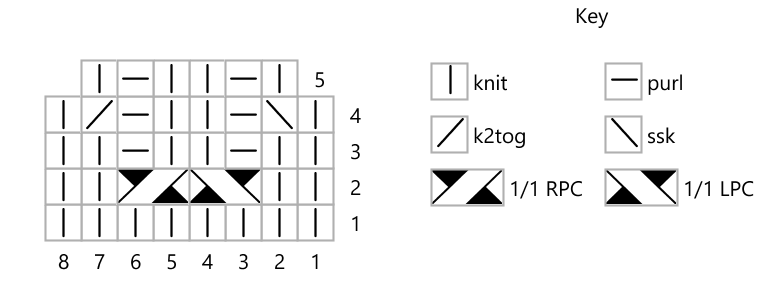There are six Stitchmastery libraries in Stitchmastery version 3. All contain the same stitches with two in English, two in German and two in Danish. The only difference between each pair is that they are based on a different 'family' of Stitchmastery symbols. The Stitchmastery Dot English library uses symbols that use the convention of a blank space to represent knit stitches and a dot to represent purl stitches. The Stitchmastery Dash English library, on the other hand, uses symbols that use the convention of a vertical dash for knit stitches and a horizontal dash for purl stitches.
The stitch definitions in each of the libraries are linked to each other so that Stitchmastery knows that the knit stitch in the 'Dot' library is related to the knit stitch in the 'Dash' library.

Hence, by swapping the library on a chart file it is possible, with minimal effort, to change the symbols in a chart. Because the Stitchmastery libraries are organised by a theme, i.e. 'Dot' and 'Dash', the resulting appearance is consistent and understandable. The example below shows a chart created with the 'Dot' Stitchmastery library.

By changing the stitch library to the 'Dash' Stitchmastery library, the appearance of the chart is quickly changed;-

In the case of the 'Dot' and 'Dash' Stitchmastery libraries, because the only difference is the stitch appearance, there is no change to the output text when a stitch library is changed. If changing between the 'English Dot' and 'Danish Dot' Stitchmastery libraries, however, the converse is true. That is, the appearance of the stitches does not change but the output text does change. In order for all of the output text to change and not just the names of the stitches, the 'Text Templates' stylesheet also needs to be changed for the appropriate language. By using a User stitch library it is also possible to customise both the output text and the text for key entries.
Alternative sources of explanation:
Comments
0 comments
Please sign in to leave a comment.